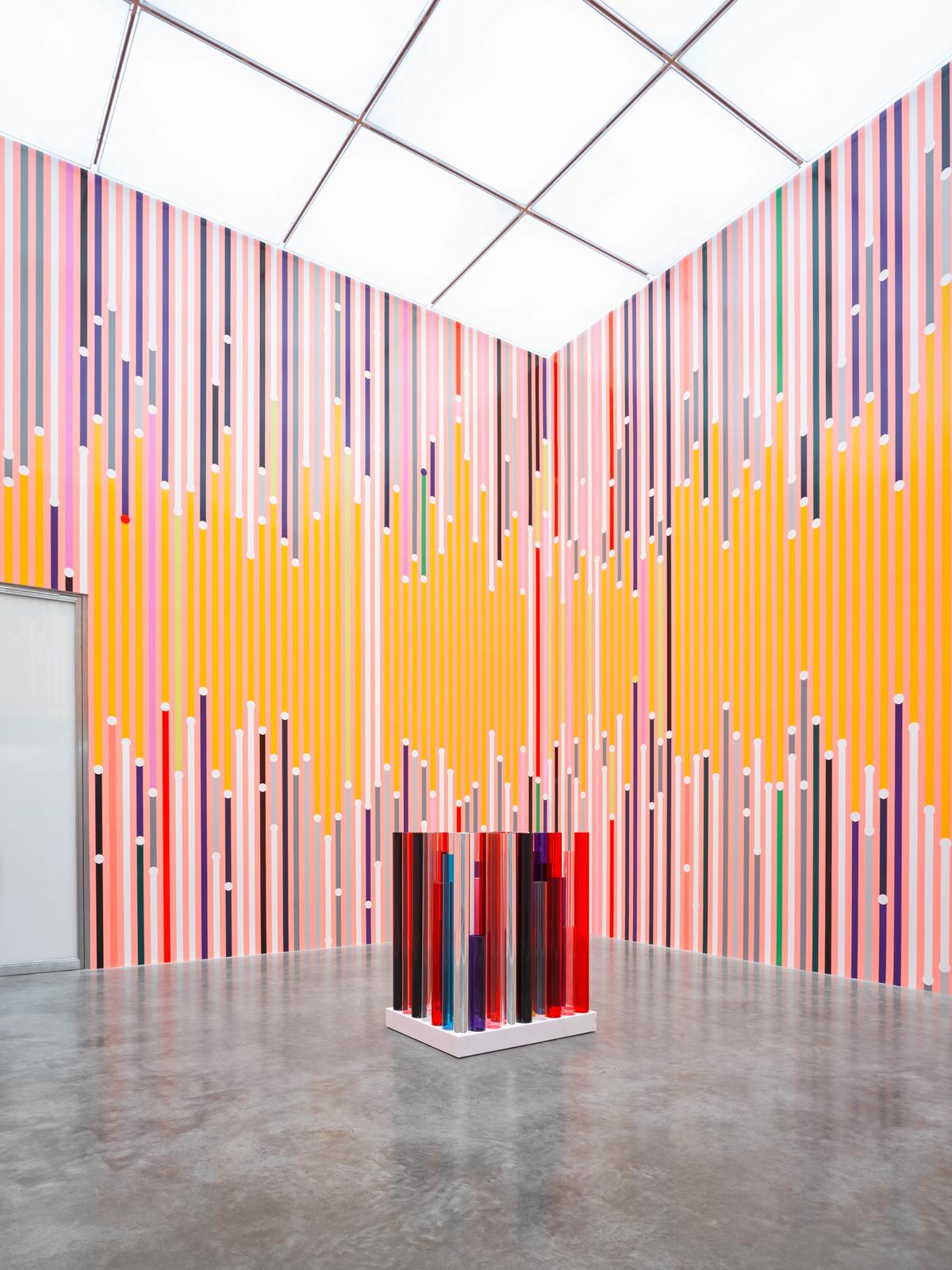Sarah Morris: Machines Do Not Make Us Into Machines (until 30 June; free) at the White Cube Bermondsey fills one of London’s most austere spaces with a collection of colourful canvases that meditate on language and symbols. Each of the painted works is inspired by fragments of spoken conversations taken from Morris’s audio recordings. The most monumental is the site-specific work Ataraxia (2019), which takes up three whole walls and is named after the philosophical concept of “imperturbable calm”. Calming is not the best way to describe standing in front of Morris’s work—the mind races trying to decode the clean curved columns and dots, that seem to allude to urban transport and population density maps. Here, spoken language becomes image which again becomes language, and Morris’s version of American abstraction speaks well to the the inability of a painting to ever truly be abstract. There are also two films in the exhibition, the better of which shows several separate narratives within Abu Dhabi, from the mundane life of a street washer to the absurdity of a falcon hospital. Morris explores her fascination with cities and interrelated social structures in parallel to her paintings, each an interconnected part of a much larger coded network.
Mandy El-Sayegh’s vitrines at the Chisenhale Gallery are like peering inside the chaos of someone’s mind. Deeply engrossing, they are difficult to look away from—they are made up of illegible, fragmented images and text, found objects and strange visceral sculptures all oozing into one another. The eye scans over the glossy surface, catches an errant word and then immediately departs to focus on a pool of thick glazed resin, raising the question: is this how we consume and store information today? Mandy El-Sayegh: Cite Your Sources (until 9 June; free) bombards the viewer with information and imagery to consider how we construct meaning in an age where the circus of mass media proliferates. One half of the gallery room is plastered in copies of the Financial Times—its trademark pink pages extending to a sticky, coral-coloured floor where economic forecasts stare up at you, drawn over in Arabic calligraphy. There is also a series of silk screen prints on canvas, where snippets of sentences are overlaid with hand-painted grids—you can read it as a whole, as parts of a crossword, or not at all. El-Sayegh is speaking to contemporary concerns of truth and fakery by highlighting how information can be, and is, constantly altered and repurposed by corporations, states, artists—and our minds.
It's your last chance to see Pierre Bonnard: the Colour of Memory (until 6 May; tickets £18, concessions available) at Tate Modern. The show charts the final four decades of the French artist’s career, skipping his early work at the end of the 19th century when he was associated with the Nabis group. The large exhibition is primarily a show of domestic scenes, snapshots—heavily influenced by photography—of his home life: Bonnard’s long-term partner bathing, dining tables and chairs, bowls of fruit, water jugs, flowers in vases, and gardens beyond viewed through open doors and windows. All the quotidian scenes have been collapsed and flattened into patches of colour. Pablo Picasso was not a fan of Bonnard, damning his work as “decadent” and “a potpourri of indecision”. Perhaps it was the way Bonnard applied patches of colour, patted on with a seemingly near-dry brush unburdened with paint. The colour saturation dial is turned up to 11. But these colours sing when Bonnard is depicting the vibrant and verdant foliage of gardens, such as In The Violet Fence (1923) with its picket fence tearing across the foreground, or flowerings trees, such as in The Studio with Mimosa (1939-46). He would have been a dab hand at painting potpourri.


